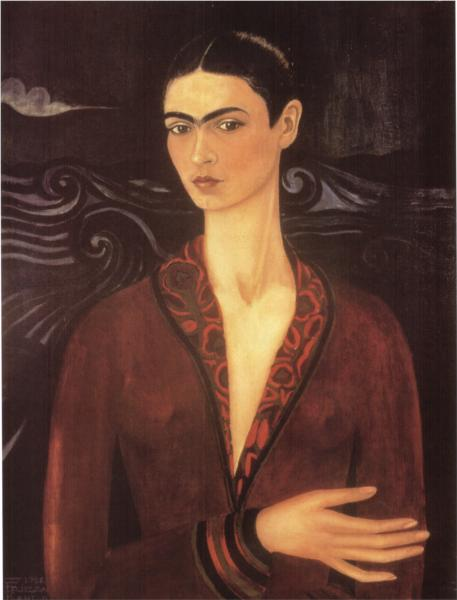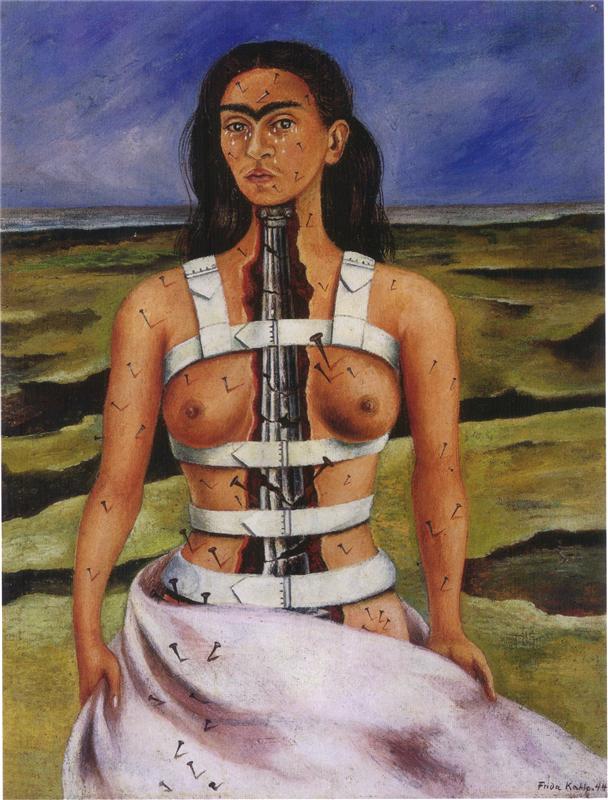Frida Kahlo (1907-1954), Autorretrato con Traje de Terciopelo, Self Portrait in a Velvet Dress, 1926 Private collection © Photo Francisco Kochen/ © ADAGP, Paris 2013
This exhibition has been organised by the Public Establishment of the Musée d'Orsay and Muséede l'Orangerie with exceptional loans from the Museo Dolores Olmedo, Mexico.
If Frida Kahlo (1907-1954) is today one of the best known and most popular figures of 20th century Mexican art, it is undoubtedly because of her personality and the originality of a body of work that defies all efforts to classify it.
Frida Kahlo (1907-1954), 'Portrait d’Alicia Galant', 1927Mexico, musée Dolores Olmedo / © ADAGP, Paris 2012 / © AKG-Images
Her work is, above all, the expression of a life –a tragic and turbulent life, one that challenged all conventions, a life known in all its detail and recently the subject of a film, making her a true icon. The mere mention of her name excites enthusiasm and admiration.
The selection at the Musée de l’Orangerie includes major works by the artist, with masterpieces from the Museo Olmedo, which holds one of the main collections of Frida Kahlo’s work, including the very famous
Colonne brisée [Broken Column].
The life and work of Frida Kahlo cannot be separated from those of her companion Diego Rivera (1886-1957). Together they became figures of legend, and both have a placein the pantheon of 20th century Mexican artists. Famous for his large mural paintings, Rivera’s easel paintings, drawings and prints, which form a large part of his artistic production,are less well known to the public in Europe.
The exhibition aimed to trace his artistic career from the early Cubist images, revealing his links with the Paris artists whose works are a key element in the Orangerie collection, to the paintings that established him as the founder of the 20thcentury school of Mexican art. Visitors are invited to discover the many aspects oft he art of Rivera. Hist ravels throughout Europe influenced his vision and hisr epertoire without ever distancing him from his roots, thus confirming his place in history as the founder of the nationalist school.
The exhibition devoted to the legendary couple Diego Rivera and Frida Kahlo presented their works together, as if to confirm the impossibility of their divorce that was in fact finalised but reconsidered after just one year apart.It also gives us a better view of their respective artistic worlds, so different and yet so complementary, through the deep-rooted attachment they shared for their country: a cycle of life and death, revolution and religion, realism and mysticism, workers and peasants.
Lots more images here
and here
Colonne brisée [Broken Column].
The life and work of Frida Kahlo cannot be separated from those of her companion Diego Rivera (1886-1957). Together they became figures of legend, and both have a placein the pantheon of 20th century Mexican artists. Famous for his large mural paintings, Rivera’s easel paintings, drawings and prints, which form a large part of his artistic production,are less well known to the public in Europe.
The exhibition aimed to trace his artistic career from the early Cubist images, revealing his links with the Paris artists whose works are a key element in the Orangerie collection, to the paintings that established him as the founder of the 20thcentury school of Mexican art. Visitors are invited to discover the many aspects oft he art of Rivera. Hist ravels throughout Europe influenced his vision and hisr epertoire without ever distancing him from his roots, thus confirming his place in history as the founder of the nationalist school.
The exhibition devoted to the legendary couple Diego Rivera and Frida Kahlo presented their works together, as if to confirm the impossibility of their divorce that was in fact finalised but reconsidered after just one year apart.It also gives us a better view of their respective artistic worlds, so different and yet so complementary, through the deep-rooted attachment they shared for their country: a cycle of life and death, revolution and religion, realism and mysticism, workers and peasants.
Lots more images here
and here


